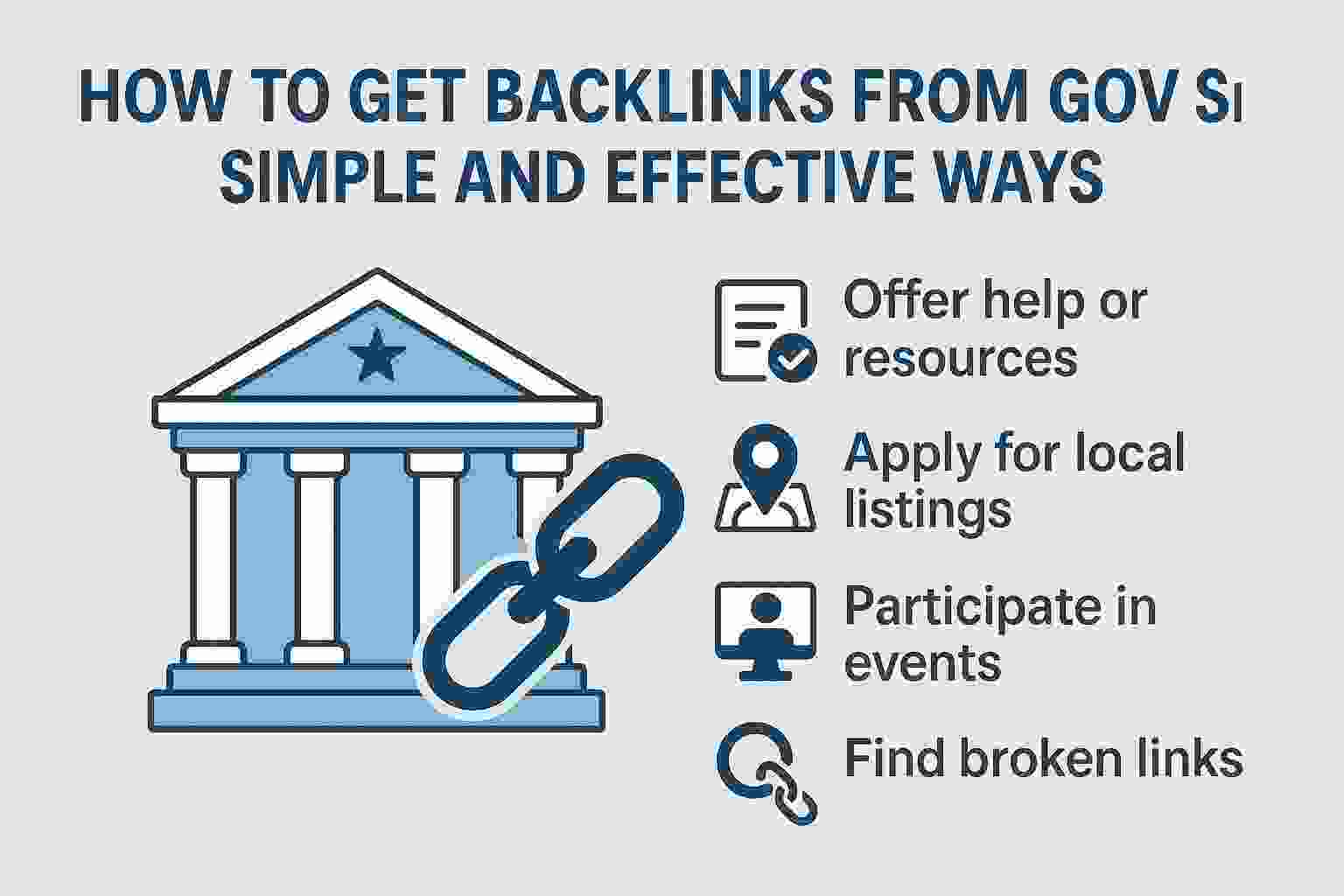Backlinks are one of the most powerful factors in SEO, and not all backlinks are equal. Links from .GOV websites are especially valuable because these sites are trusted, authoritative, and usually have very high domain authority.
Getting a backlink from a government website is not easy — but it’s not impossible. With the right strategy and a little patience, you can earn these powerful links and boost your rankings.
In this guide, we’ll walk through step-by-step how you can get backlinks from GOV sites in a natural and ethical way.
1. Understand Why .GOV Backlinks Are So Valuable
Government websites have strong authority because:
They are trusted by Google and the public.
They have strong backlink profiles themselves.
They are less likely to link to low-quality or spammy sites.
When a .GOV site links to your website, it sends a strong trust signal to search engines, which can help your site rank higher in search results.
2. Focus on Value First
Before you even try to get a .GOV backlink, you must offer something valuable that a government site would want to share. Examples include:
Helpful guides or resources related to their audience.
Free tools or calculators relevant to their work.
Research or data that could support their content.
If your content isn’t useful to their audience, they simply won’t link to it.
3. Identify Opportunities on GOV Websites
You need to find .GOV pages that could logically link to your content.
Here’s how:
Search in Google:
site:.gov “resources”
site:.gov “links”
site:.gov “helpful links”
Check for pages that already list useful resources.
Look for government blogs or news sections.
4. Create Content That Matches Their Needs
The best way to attract a .GOV backlink is to align your content with the mission of the government site. For example:
If it’s a health department site, create a detailed guide on healthy living, free medical resources, or emergency preparedness tips.
If it’s a small business agency site, publish articles about funding opportunities, business planning templates, or tax tips.
Make your content well-researched, fact-checked, and easy to read.
5. Outreach to the Right Contact
Once you have your content ready, it’s time to reach out:
Find the right person — usually a content manager, webmaster, or communications officer.
Use the contact page or email provided on the site.
Write a polite, short, and personalized email explaining:
Who you are.
Why your content is valuable to their audience.
The exact page on their site where your link would fit naturally.
6. Build Relationships, Not Just Links
Government sites rarely give backlinks to strangers. Building relationships helps:
Attend community events or webinars hosted by government agencies.
Engage with them on social media.
Offer help or resources before asking for a link.
The more trust you build, the better your chances.
7. Contribute to Government Programs or Initiatives
Sometimes you can get backlinks by:
Partnering with a government-sponsored program.
Volunteering for a project and getting mentioned on their site.
Providing free resources, training, or guides they can share.
8. Use Testimonials and Case Studies
If you’ve worked with a government organization in the past:
Offer them a testimonial.
Write a case study they can publish.
This often results in a link back to your site.
9. Avoid Spammy or Paid GOV Links
Some people try to buy GOV backlinks or use shady methods. This can backfire badly:
Google can penalize your site.
The GOV site may remove your link.
Always focus on ethical, white-hat link building.
Conclusion
Getting backlinks from GOV sites is challenging, but it’s worth the effort. Focus on creating valuable, relevant content, finding the right opportunities, and building genuine relationships with government contacts. Over time, these powerful backlinks can give your website a major boost in search rankings and authority.



